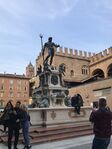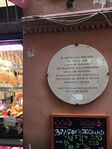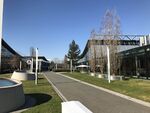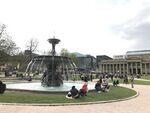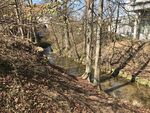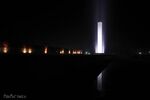LED Online Seminar 2019 - Working Group 7: Difference between revisions
| Line 144: | Line 144: | ||
<gallery caption=" " widths="150px" heights="150px" perrow="5"> | <gallery caption=" " widths="150px" heights="150px" perrow="5"> | ||
File:Swadhinata Stambha.jpeg | File:Swadhinata Stambha.jpeg | ||
The main attraction of the Swadhinata Stambha is the Stambha / monument itself. Stambha means pillar or tower in Bengali. The tower was built on the place where the commander-in-chief of East Pakistan Army Amir Abdullah Khan Niazi signed the papers of his surrender. | The main attraction of the Swadhinata Stambha is the Stambha / monument itself. Stambha means pillar or tower in Bengali. The tower was built on the place where the commander-in-chief of East Pakistan Army Amir Abdullah Khan Niazi signed the papers of his surrender. During night, the tower looks elegant as the rays of light come out from every single inches of the tower. The whole tower turns into a white pillar. The tower is square according to the plan and is 16 feet wide from every side with an area of 64 inches. The underground museum of the project comprises several photographs with historical significance. There are a number of terracotta murals on war-heroes and the events of the Liberation War, a 2000-seat auditorium, and an open-air theatre. The eternal flame stands beside the tower. The water body of the project reflects the whole tower all the day and increases the beauty of the project. But the water body is under potential threat as the local slum-dwellers use it for their daily needs. This monument is representing the past , present and future of Bangladesh at a time. Geo-location 23°43'59.3"N 90°23'55.5"E | ||
During night, the tower looks elegant as the rays of light come out from every single inches of the tower. The whole tower turns into a white pillar. The tower is square according to the plan and is 16 feet wide from every side with an area of 64 inches. | |||
The underground museum of the project comprises several photographs with historical significance. | |||
There are a number of terracotta murals on war-heroes and the events of the Liberation War, a 2000-seat auditorium, and an open-air theatre. The eternal flame stands beside the tower. | |||
The water body of the project reflects the whole tower all the day and increases the beauty of the project. But the water body is under potential threat as the local slum-dwellers use it for their daily needs. | |||
This monument is representing the past , present and future of Bangladesh at a time. Geo-location 23°43'59.3"N 90°23'55.5"E | |||
Revision as of 21:58, 14 May 2019
--> Back to working group overview
Dear working group members. This is your group page and you will be completing the template gradually as we move through the seminar. Good luck and enjoy your collaboration!
Assignment 1 - Reading and Synthesizing Core Terminology
- You can read more details about this assignment here
- Readings are accessible via the resources page
Step 1: Your Landscape Democracy Manifestoes
- Initial manifesto yourname
Nahian's manifesto
Step 2: Define your readings
- Please add your readings selection for the terminology exercise before April 24:
A: Landscape and Democracy
1. Amir - Why is landscape beautiful? - Burckhardt, Lucius (1979)
2. Júlia - Urban Planning and Democracy - Júlia (1957)
3. Gaia - Meinig, D. W. (1979): "The Beholding Eye: Ten Versions of the Same Scene."
B: Concepts of Participation
1. Amir - Consensus Design - Day, Christopher (2002)
2. Gaia - Gaventa, John: The Powerful, the Powerless, and the Experts
3. Nahian - Hester, Randolph (2005): Whose Politics, Landscape Architecture
C: Community and Identity
1. Amir - Cinematic Landscapes - Welk Von Mossner, Alexa (2014)
2. Nahian - Nassauer, Joan Iverson (1995): Culture and Changing Landscape Structure, Landscape Ecology, vol. 10 no. 4.
D: Designing
1. Júlia - Design for Ecological Democracy - Randolph T. Hester (2006)
2. Gaia - Hester, Randolph: Life, Liberty and the Pursuit of Sustainable Happiness
3. Nahian - Pritzker Prize winning architect Alejandro Aravena on sustainable design and community involvement in Chile
E: Communicating a Vision 1. Júlia - - (0)
Steps 3 and 4: Concepts Selection and definition
- Each group member selects three relevant concepts derived from his/her readings and synthesize them/publish them on the wiki by May 15, 2019
- Group members reflect within their groups and define their chosen concepts into a shared definition to be posted on the wiki by June 12, 2019.
- Other group members will be able to comment on the definitions until June 30, 2019
- Each group will also report on their process to come to a set of shared definitions of key landscape democracy concepts on the wiki documentation until July 12, 2019
Concepts and definitions
Author 1: ...
- ......
- .......
- .......
Author 2: ...
- ......
- .......
- .......
Author 3: Gaia Uguccioni
- Landscape and Democracy
Every landscape hides a meaning that is not explicit in the ordinary forms. Is a concept that lies utterly beyond science, that holds ideas, impressions and ineffable complexities that depends on how we are affected by it and from the values we associate to it.
- Concepts of Participation
Partecipatory processes are a form of access to a paradigm which the people had a little part in creating. Starts with the reappropriation of knowledge by those who are affected by it and evolves as a strategy in which the powerless develop, create, gain control and systematize their own science.
- Designing
In the modern broad cities is evident the disassociation from community and environment and the human behavior appear antagonistic to sustainability. Holistic insight should be pursuit to guide the design of urban forms and to find new directions for a reformulation of intents and ideals of fulfillment.
Author 4: ...
- ......
- .......
- .......
Step 5: Reflection
Step 6: Revised manifestoes
- please look again at your initial manifestoes and update them with any new aspects/prespectives you have taken up during this seminar
Assignment 2 - Your Landscape Symbols
- You can read more details about this assignment here
Landscape Symbols Author 1: Júlia Ildikó Kozma
“Szabihíd” project, Liberty Bridge urban picnic “Szabihíd” project started in 2017 when the Libert Bridge was closed due to constartion work. City dwellers and turist went there to enjoy the unique opportunity. At the beggining the city administration couldn’t handel the situation so they forbide to go there, but after a local orgaziation embraced this need and convienced the municipality to make a legal from. Since then the birdge is free from cars during the summer weekends and there are all different kind of activites makes this project more and more popular. 47.485755, 19.054959
Buda Castle, Hungarian National Gallery, Széchenyi National Library During the historical times the castle was the place for the king, but these days it is open for the public. People not only can see the castle but the Hungarian National Gallery and also a Széchenyi National Library take place there. It symbolize a democratyc change which maybe not obvios if you doesn’t have some knowledge about the place. 47.502262, 19.032800
Vegetable stands In the countryside small vegetable stands offer opportunity to buy fresh crop right form the a infield. Sometimes the owner is selling to you, sometimes only a box is there to collect the cost. I think it is also a symbol of trust and trust is something essentail for democracy. This system would not work without respect and understantment of the value of work. 47.557538, 10.749554
Landscape Symbols Author 2: Gaia Uguccioni
Bologna città [W]etropolitana_Not a subway access, but a sign of artistic performances that took place in those spaces and that has become part of a stratified landscape. A modern monument that represents the aesthetics of the provisional, infiltrates our landscape in a work of continuous adaptation, with a tangible subliminal act plausible enough to become familiar and mimically incorporated.
al Żigànt_The Fountain of Neptune, also known as "the Giant", is a renaissance opera that stands into Piazza Maggiore, the most important square in Bologna. It was designed to glorify the papal government (as Neptune dominates the waters, so the Pope dominates the world). It is currently one of the most famous and recognized symbols of the city.
=== Landscape Symbols Auther 3: Seyed Amir Hosseini Shahrestani
Roof garden of Exhibition hall Stuttgart.The place which people can take rest from chaos of Exhibition hall, to get together, talk and know each other. most of the time people contact each other after a short conversation. I would like to name this place ‘’the place of socializing and business’’. 48.693282, 9.186010
Landscape Symbols Author 4: Nahian Zobaid
SYMBOL OF HOPE.
This photograph clicked by me in Bangladesh. As we know that Bangladesh is a riverine country and it is very common to get new land (river sand bed / Char) in the river. Sometimes some of these new lands last for long and sometimes some of those vanish in a short time. As a agricultural country (Bangladesh) most of the country men are farmers and when they see that there are little bit green (like the photograph) on the river sand bed / char, then they get hope to get new agricultural land. These green are the symbol of hope for these farmers. Geo-location 20'34N to 26'38N latitude, 88'01E to 92'41E longitude
Independence Monument / Swadhinata Stambha
- Symbol yourname photovoice3
add a caption (one paragraph max) description of the symbolism, interpretation, as well as geo-location
Assignment 3 - Role Play on Landscape Democracy "movers and shakers"
- You can read more details about this assignment here
Assignment 4 - Your Landscape Democracy Challenge
- You can read more details about this assignment here
- Each group member will specify a landscape democracy challenge in his/her environment
Landscape Democracy Challenge 1
- Give a title to your challenge
- Yourname challenge 1.jpg
caption: why did you select this case?
- Yourname challenge 2.jpg
caption: what is the issue/conflict (1)
- Yourname challenge 3.jpg
caption: what is the issue/conflict (2)
- Yourname challenge 4.jpg
caption: who are the actors?
Your references:
- ...
- ...
Landscape Democracy Challenge 2
- Give a title to your challenge
- Yourname challenge 1.jpg
caption: why did you select this case?
- Yourname challenge 2.jpg
caption: what is the issue/conflict (1)
- Yourname challenge 3.jpg
caption: what is the issue/conflict (2)
- Yourname challenge 4.jpg
caption: who are the actors?
Your references:
- ...
- ...
Landscape Democracy Challenge 3
- Give a title to your challenge
- Yourname challenge 1.jpg
caption: why did you select this case?
- Yourname challenge 2.jpg
caption: what is the issue/conflict (1)
- Yourname challenge 3.jpg
caption: what is the issue/conflict (2)
- Yourname challenge 4.jpg
caption: who are the actors?
Your references:
- ...
- ...
Landscape Democracy Challenge 4
- Give a title to your challenge
- Yourname challenge 1.jpg
caption: why did you select this case?
- Yourname challenge 2.jpg
caption: what is the issue/conflict (1)
- Yourname challenge 3.jpg
caption: what is the issue/conflict (2)
- Yourname challenge 4.jpg
caption: who are the actors?
Your references:
- ...
- ...
Your Democratic Change Process
- Add Title
- Your Democratic Change Process Slide1.jpg
caption: ...
- Your Democratic Change Process Slide2.jpg
caption: ...
- Your Democratic Change Process Slide3.jpg
caption: ...
- Your Democratic Change Process Slide4.jpg
caption: ...
Reflection
- ....
- ....
- ....
Conclusion:
- ....
- ....
- ....
Your references
- ...
- ...
- ...
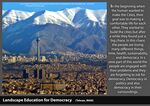
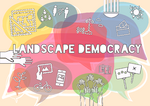
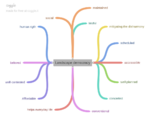

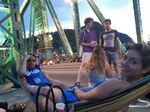

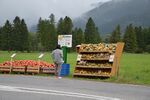
![Bologna città [W]etropolitana_Not a subway access, but a sign of artistic performances that took place in those spaces and that has become part of a stratified landscape. A modern monument that represents the aesthetics of the provisional, infiltrates our landscape in a work of continuous adaptation, with a tangible subliminal act plausible enough to become familiar and mimically incorporated.](/images/thumb/1/1b/1_Wetropolitana.jpg/112px-1_Wetropolitana.jpg)
